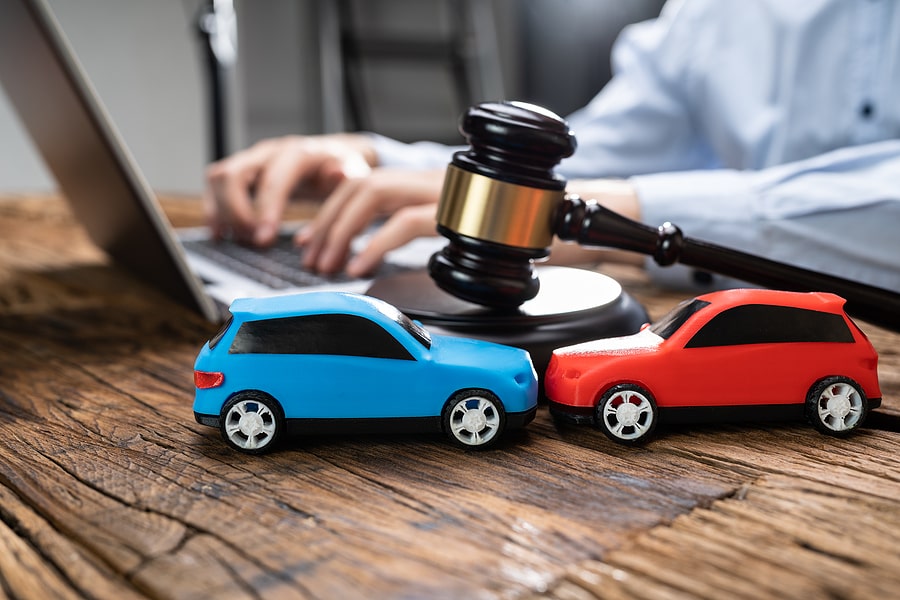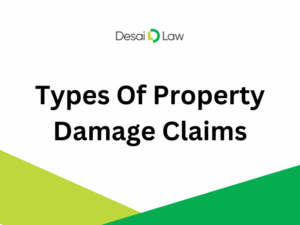Head-on collisions are not common, but the sheer amount of damage caused by a head-on collision can cause irreparable damage, injury, and even death. When a head-on collision injures you or a loved one, you need to understand how head-on collisions occur, how fault is determined, and whether you can sue for damages caused by another party.
This guide outlines these basics, so you can determine how to move forward with your claim. For more information, contact a car accident attorney near you today.
What Is a Head-On Collision?
A head-on collision, also known as a frontal collision, refers to a vehicle accident where two vehicles traveling in opposite directions strike each other. Unlike other accidents where the primary damage takes place on the side or rear of a vehicle, head-on collisions occur when both vehicles impact at the front. Head-on collisions can occur with any vehicle, including cars, motorcycles, trucks, airplanes, trains, subways, and even ships.
You can usually identify a head-on collision by looking at the vehicle damage. If the front sections of both vehicles have evident damage, the accident was likely a head-on collision. Head-on crashes often cause extreme financial and physical injury due to the combined force of both vehicles colliding at speed, at a single point.
Injuries That Occur in Head-On Collisions
The high level of force involved in a head-on collision frequently causes serious injury and fatalities.
Common injuries that occur in this type of accident include:
- Whiplash and neck pain
- Back pain, spinal cord injuries, and paralysis
- Abdominal injury
- Chest, rib, and pelvis fractures
- Head injury, concussion, and traumatic brain injury
- Foot, ankle, and leg fractures
- Hand, wrist, and arm fractures
Causes of Head-On Collisions
The main cause of head-on collisions is a vehicle traveling in the wrong direction on the road. This can occur for many reasons, from crossing the middle line to driving the wrong way down a one-way street.
Below are some of the most common causes of head-on collisions:
- Intoxicated driving
- Aggressive driving
- Inattentive or distracted driving
- Unfamiliarity with the area
- Medical emergency
- Loss of mechanical control
- Poor road construction
- Missing or insufficient road signs
- Inclement weather and poor visibility
- Animals, people, or obstructions in the road
- Another vehicle pushed the driver into the opposite lane
How Fault Is Determined in Head-On Collisions
With so many potential causes, determining fault in a head-on collision can be complicated. The most reliable evidence comes from examining the exact location of the collision. If one vehicle was moving in the wrong direction when the collision occurred, the driver of that vehicle is usually at fault.
To determine fault, authorities must also consider the conditions under which the collision occurred. If the driver who was going the wrong way was negligent (which is to say they did not use reasonable care while driving), the injured party may sue that driver for damages. In the case of frontal collisions, a driver exhibits reasonable care if they drive in the correct lane, in the right direction, and with appropriate attention to the road and road signs.
If the driver exhibited reasonable care while driving but another driver, an obstruction, or a medical emergency forced them into oncoming traffic, determination of fault becomes more complicated. If you wish to pursue damages for a head-on collision, determining fault is the first step in the claim process.
What to Do if You Are in a Head-On Collision
If you are in a head-on collision, seek medical assistance as soon as possible. Even if you feel fine at the time, be sure to have yourself evaluated by a medical professional. Often, shock and adrenaline will mask severe injuries and you may not feel them until later.
Do not admit fault or sign a waiver without consulting your attorney. The other driver and their insurance company will be working to mitigate their responsibility. Although some drivers immediately admit fault, more often drivers will have different perspectives or memories about what occurred. They may lie to avoid being sued for damages, or all parties may be so injured that nobody remembers how the accident occurred.
Since the drivers may be unreliable or unavailable as witnesses, you may need to gather physical evidence. When rescue teams and law enforcement arrive, they are more concerned with cleanup and medical assistance than with preserving the accident scene. By the time you seek legal assistance, evidence at the accident scene may have disappeared.
If you can, obtain evidence from the site and contact a car accident attorney right away. They can collect eyewitness statements, gather evidence, and even reconstruct the accident scene so you can file a compelling claim against the at-fault driver.
Suing for Damages
When submitting a claim for damages in a head-on collision, you will need to prove that the driver you are suing is at fault due to negligence or breach of duty of care. You must be able to show that their failure to drive responsibly directly caused the accident. In addition, you will need to prove that you suffered financial, physical, emotional, and mental damage due to the accident. This evidence can consist of medical bills, doctor statements, and quantified property damage information, such as a repair estimate.
If you can, take photos and videos of the accident site, including the damage to both vehicles, skid marks, debris locations, and final vehicle locations. Obtain contact information from eyewitnesses, including their names, phone numbers, and addresses. Your attorney can analyze the photographic evidence, driver statements, and witness statements to determine who was at fault. From there, they can help you decide whether you have grounds to pursue damages.
Contact a Car Accident Attorney
If you or a loved one were in a head-on collision, reach out to a personal injury attorney. A team of compassionate attorneys and legal professionals can work with you to help determine the best way to proceed with your injury suit. Contact a car accident attorney near you today to get started.





